Echeveria is a huge genus of flowering plants that belong to the Crassulaceae family. These plants are indigenous to semi-desert regions in Mexico, Central America, and the northwestern part of South America.
As succulents gain widespread popularity, many gardeners are exploring echeveria plants. These stylish plants create balanced rosette patterns with thick, juicy leaves that exhibit a diverse spectrum of colors and shapes.
With countless unique varieties, this adaptable plant can thrive both indoors and outdoors. It serves as a delightful tabletop embellishment, complements floral displays, enhances terrariums, graces containers, contributes to living walls, adds charm to rock gardens, and thrives in waterwise borders.
Under ideal conditions, echeveria grows almost as a maintenance-free plant. Like other succulents, this drought-resistant plant retains water in its leaves, enabling it to endure dry periods.
Description of Echeveria Plants

Some of these plants keep their leaves all year round (evergreen), while others shed their leaves seasonally (deciduous). They have short-stalked flowers that emerge from compact rosettes of thick, juicy leaves. These leaves often come in vibrant colors.
Echeveria Plants can flower and produce seeds multiple times during their lifetime. Hence, they are termed as polycarpic species. Many echeverias create numerous offsets, which are also known as “hens and chicks.” Interestingly, this term can also refer to other plants like Sempervivum, which are quite different from Echeveria.
Echeverias play crucial roles in the environment. They serve as host plants for butterflies. For instance, the butterfly Callophrys xami relies on several Echeveria species as suitable hosts. Moreover, these species of plants are integral to the egg-laying process of many butterfly species including Callophrys xami.
Types of Echeveria Succulents

EriaWei, Echeveria elegans – 1, CC BY-SA 4.0
There are more than 150 species and 1,000 cultivars of the Echeveria genus that botanists discovered. You can grow a collection of these plants in a spacious pot. This provides an eye-catching and captivating visual appearance to your interiors. Let us delve into some of the popular echeveria types and learn how to identify them:
Echeveria rosettes: These charming plants form symmetrical, circular clusters of thick leaves. Look for their distinct rosette shape.
Echeveria elegans (Mexican Snowball): it has pale blue-green leaves that resemble frosted snowballs.
Echeveria agavoides (Lipstick Echeveria): Its leaves have reddish edges, resembling lipstick. Keep an eye out for this striking feature.
Echeveria pulidonis: This one boasts silvery-blue leaves with reddish tips. It is like a miniature work of art.
Echeveria ‘Perle von Nürnberg’: Its leaves blend lavender and pink hues, creating a mesmerizing effect.
Remember, each echeveria type has its own unique flair, making them a delightful addition to any plant collection!
Growing Echeveria Plants
Light
For optimal growth, these succulents need at least eight hours of sunlight. The foliage of these plants generates the best of bold colors to iridescent pastels, under full sunlight. However, during hot afternoons, sun rays can cause sunburns on foliage. So, it is best to provide them with some afternoon shades.
On the other hand, being deprived of sunlight can make them elongated and leggy. They may also not bloom as expected. Hence, grow them in sunny spaces.
Houseplants typically thrive well near western or southern windows. These locations provide the essential light they require for rejuvenation. After winter, you can gradually transit them outdoors, allowing them to adapt sunlight exposure.
Soil
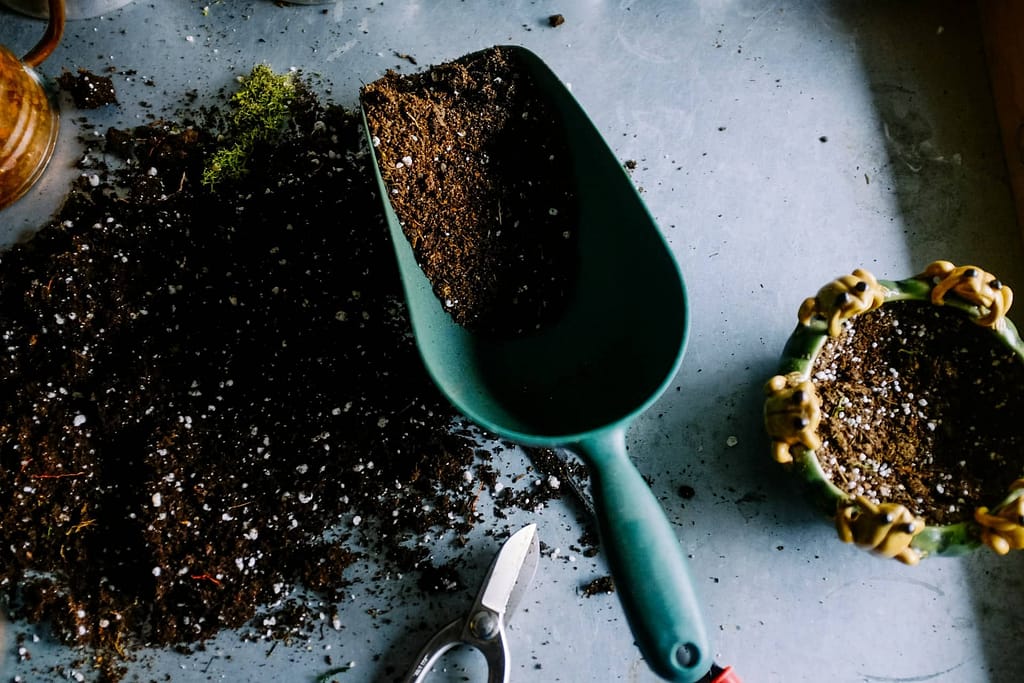
These plants require a porous growing medium that drains well. You can find regular cactus potting mixes in nearby garden centers or nurseries. In most cases, this is enough for growing your succulents.
You can also prepare your own DIY cactus soil. Mix standard potting soil (three parts) with coarse sand (two parts) and perlite (one part). Your plants can grow well in this mixture.
Although echeveria is a house plant, you can grow them in garden beds also. But make sure the soil has good drainage and its pH value is 6.0 or slightly acidic. Mulching around them with sand or gravel checks weed growth and preserves moisture.
Propagating Echeveria Plants
There are various methods to propagate these succulents. It can be done easily through offset or leaves. You can also propagate them with seeds. We have discussed all these easy procures as below:
Leaf or offset Propagation
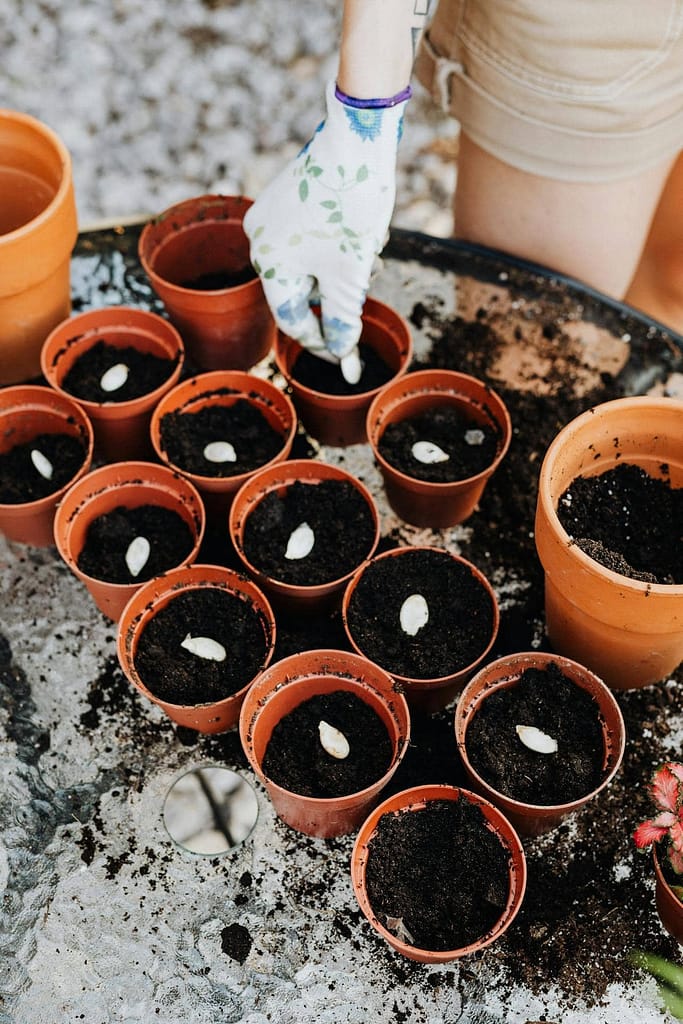
1.) Delicately detach a leaf from the plant’s main stem by wiggling it from side to side until it pops off. Remember to propagate more than one leaf. Not all of them will successfully grow into new plants, so having extras increases your chances of success!
If you go for offsets, use a sterile, sharp knife to remove them from the parent plant.
2.) Place the leaves or offsets on the soil surface of the pot and gently press them down with your fingers.
3.) Place the arrangement in a bright location that is not exposed to direct sunlight. Mist regularly until the plant establishes itself.
4.) Normally, baby roots develop within 2-3 weeks and tiny rosettes sprout out following them.
As the new plants begin to grow, the original leaf dries up and crumbles away. So, do not separate it manually, as it provides nutrients to the new growth.
Once the rooting becomes strong and plants establish themselves, you can harden them off for about 2 – 3 weeks, before exposing them to direct sunlight outdoors. This prevents the risk of sunburn.
Seed Propagation
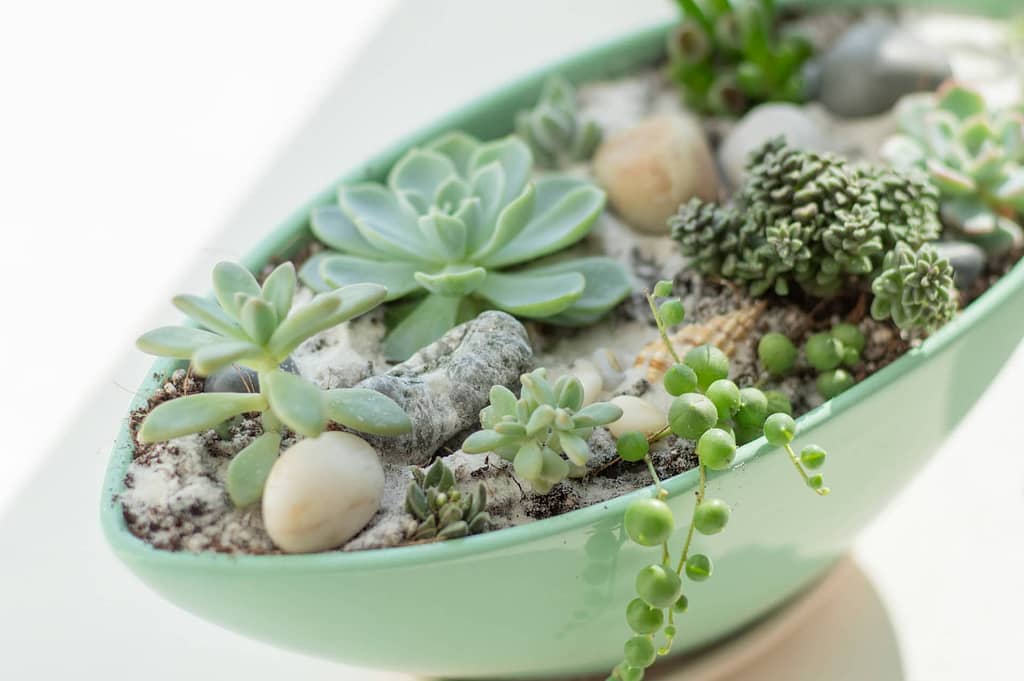
In most cases, these types of hybrid cultivars often do not give rise to offspring that exactly resemble the parent plant. Hence, most gardeners do not recommend this procedure. However, if you intend to grow these types of offspring, you can try this method.
1.) Fill a pot that has good drainage with succulent and cactus mix. Scatter seeds on the surface, spacing them as much as possible.
2.) Moist the soil by misting it and cover the arrangement with a plastic wrap to maintain the moisture.
3.) Place the arrangement in a location that is bright and does not receive direct sunlight.
4.) Once a day, uncover the arrangement for about an hour. This allows the plant to get some fresh air
When the temperature for germination hovers around 65°F – 70°F, these seeds typically begin to sprout within 2 to 3 weeks. After sprouting, remove the plastic wrap covering. Maintain the soil moisture till the plants mature.
Maintaining Echeveria Plants
Watering Echeveria Plants
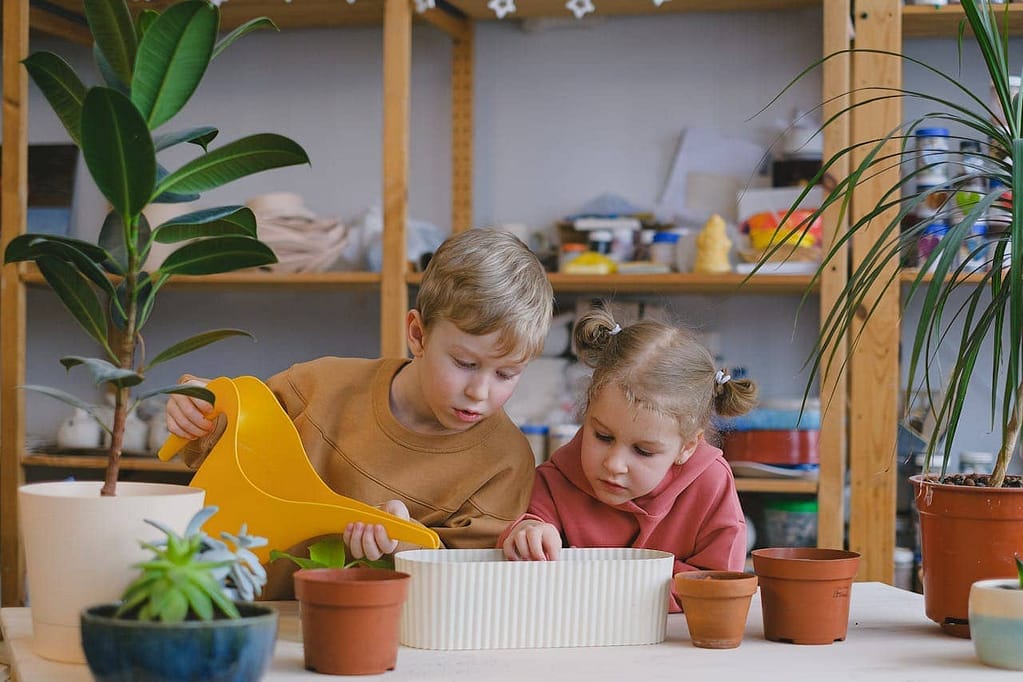
Like most of the popular succulents, these plants do not need much water to thrive. Overwatering can readily lead to root rot. However, they do not prefer to be excessively dry too. If they do not get sufficient water, they begin to show symptoms like wrinkling of foliage. Hence, newbies need to be careful while watering these plants.
Soak the plants well and wait till the soil dries out before the next schedule. During growing seasons, they may require about 0.5 – 1 cup of water every week or so. In summer these plants may need more water. In winter, just occasional watering about once or twice a month is more than enough.
Temperature and Humidity
Echeveria plants thrive well in hot, dry atmospheres. However, high humid conditions may lead to root rot. Similarly, they do not do well in cold temperatures. Cold drifts can kill them almost instantly. So, bring them indoors if the temperature drops down below 55°F.
You can grow them in average temperatures and humidity levels well. But do not let them for long near highly humid spaces like a laundry room or bathroom. Avoid growing them near drafty doors and windows too, as sudden drifts can harm them.
Fertilizer
Echeveria plants are used to thrive in nutrient-poor soil. Hence, they don’t necessarily need frequent fertilization. However, during their active growth in spring and summer, occasional fertilizing can be beneficial. Be careful not to overdo it, as they can suffer from fertilizer burn.
While doing so, use succulent or cactus fertilizer or a controlled-release balanced liquid fertilizer (20-20-20) diluted more than usual (about two to four times). Use mild fertilizers with low nitrogen content for young fresh plants
Pruning Echeveria Plants
Echeveria plants typically do not need frequent pruning, but it is advisable to trim the flower stems near the base once they have finished flowering. This encourages fresh blooms.
Due to insufficient sunlight or any another reason, these plants can become elongated and appear leggy, especially indoors. Some parts may experience damaged growth. As a part of natural life cycle, the lower leaves dry up and die.
Pruning becomes necessary under these types of conditions. It encourages new growth and prevents common problems such as root rot. You can prune your plants anytime. However, it is best to prune them at the start of their growing season in spring. This makes fresh growth faster, easier, and healthier.
Repotting Echeveria Plants
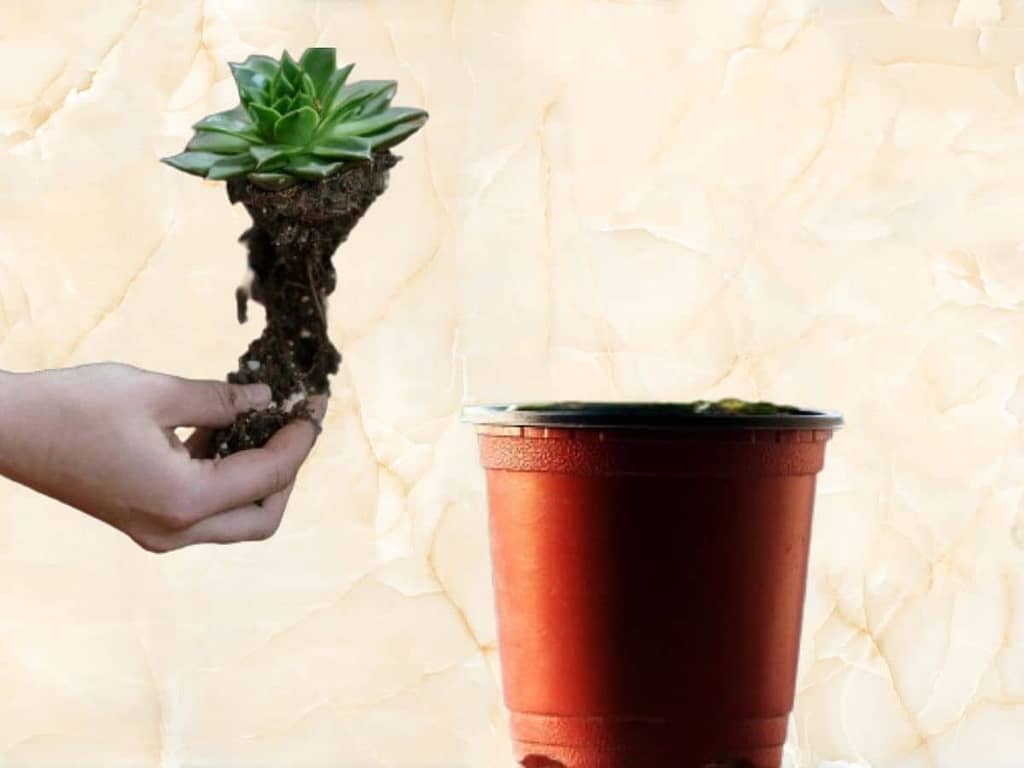
Echeveria plants prefer to grow crowded and have low nutrient needs. Hence, they do not need repotting frequently. Depending on the environment, they may outgrow the holding pot once in 2-3 years. At this time, you may consider repotting them.
Spring is the ideal time for repotting your plant because it is when the plant becomes most active in growth. To replant an echeveria plant, follow these steps:
1.) Make sure the soil is completely dry before taking the plant out of its pot.
2.) Carefully remove the plant from the pot.
3.) Gently shake off any excess soil from the roots. Check for any rotted or dead roots and remove them. If there are any cuts, treat them with a fungicide
4.) Fill the new pot with fresh potting mixture. Carefully position the new plant in the center of the pot, ensuring it sits at roughly the same depth as it did before. Close the gaps around the root ball with the potting mixture.
5.) Wait for about a week before watering, to prevent the risk of root rot.
Remember, a little patience during the repotting process goes a long way in ensuring your plant’s health!
Other Tips on Echeveria Plants
Flowering
Until matured for a minimum of four seasons, these plants do not flower. They sprout out fresh flowers usually in growing seasons from spring to summer. These flowers do not have a recognizable scent, naturally. You can apply thin, diluted high-phosphorus fertilizers like 5–10–5 ratio fertilizer to encourage flowering. Pruning wilted or dead flowers also helps fresh growth.
Extreme temperatures, insufficient lighting, and soggy environments discourage flowering. Hence avoid such growing conditions for your indoor plants
Toxicity
Along with hardiness and versatility, echeveria plants are pet and kid-friendly too! They are not toxic to humans, livestock, and other pets. However, it is best to keep them out of reach from kids and pets to ensure their health.
Uses
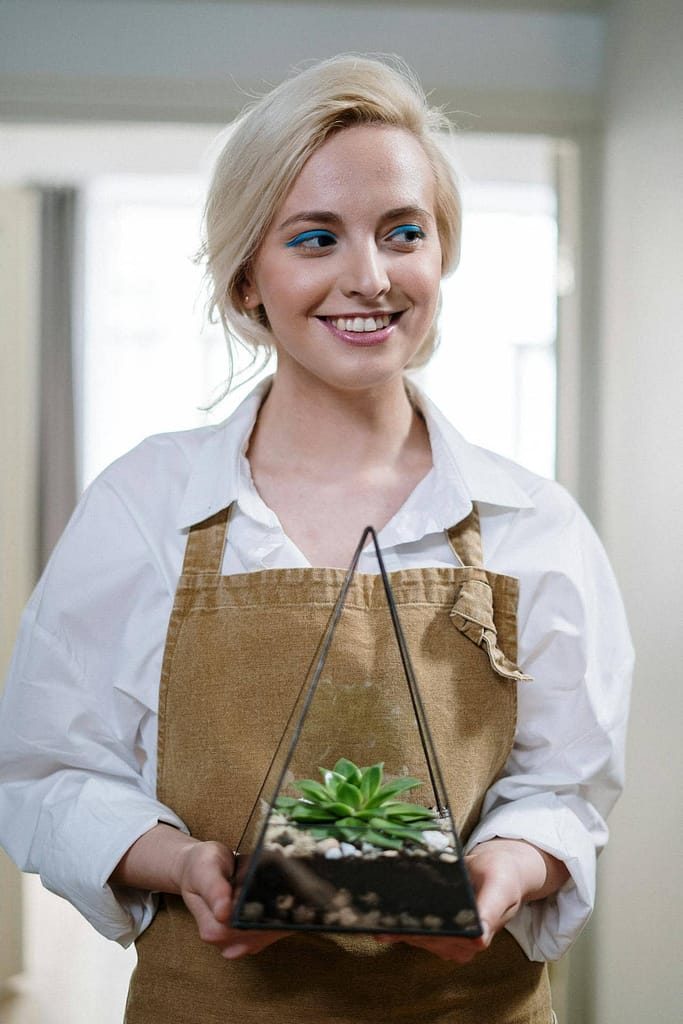
Here are some simple and unique ideas for using echeverias in various arrangements:
Terrarium Magic: Plant echeverias along with other succulents in a terrarium. Enhance it with decorative touches like colored rocks and miniature statuary.
Rosette Elegance: In a pedestal pot, plant different colored echeveria rosettes. Add trailing succulents like donkey’s tail or string of pearls. This creates an eye-catching floral arrangement.
Rock Garden Beauty: Grow echeverias, alpines, and other drought-tolerant succulents to adorn your rock gardens. Remember to move echeverias indoors before the first frost in fall.
Living Wall Art: Design a colorful tapestry along a fence by creating a green wall adorned with echeverias and other colorful succulents.
Sunny Focal Point: At a sunny space in your yard, place a bowl-shaped container on a base. Plant it with echeverias and other succulents. This provides a season-long display with low maintenance.
Feel free to get creative and enjoy your scenic adventures!
Managing Pests and Diseases in Echeveria Plants
Echeveria plants are generally pest-free, but they can be bothered by common insects such as mealybugs and spider mites in certain environments.
Spider mites weave delicate white webs beneath and between leaves. These pesky creatures thrive in hot and dry conditions, leading to yellowing, white spots, or discolored leaves that fall off eventually.
Mealybugs are tiny white creatures, that appear like little chitons on the leaves. They thrive in warm and humid environments and can lead to curled, yellowed leaves that eventually fall off.
Attract beneficial insects like predatory wasps and ladybugs. They will happily munch on those common pests. For more serious infections, try horticultural soap oil or neem oil treatments. These natural solutions can work wonders.
Fungal problems, such as root rot and soft tissue rot, tend to develop and spread in humid or wet environments.
Make sure your plants have enough air circulation. Space them out well, especially in high-humidity areas. Plant in soil that drains well to avoid waterlogged roots. Never water your plants more than they need.
These simple practices will help keep your plants healthy and prevent many common diseases.
Quick Reference Guide
| Common Name | Echeveria |
| Botanical Name | Echeveria spp. |
| Family | Crassulaceae |
| Plant Type | Succulent |
| Hardiness (USDA Zone) | 9-12 |
| Native to | South America, Central America, North America |
| Flower/Foliage Color | Pink, Orange, White, Yellow, Red |
| Soil pH Value | 6.0-7.0 |
| Height | 2-24 inches |
| Spread | 2-12 inches |
| Maintenance | Low to Moderate |
| Water Needs | Low |
| Uses | Waterwise Borders, Living Walls, Containers, Rock Gardens, Zen Gardens, Xeriscape |
Frequently Asked Questions
For optimal growth, these succulents need at least eight hours of sunlight. The foliage of these plants generates the best of bold colors to iridescent pastels, under full sunlight.
During growing seasons, they may require about 0.5 – 1 cup of water every week or so. In summer these plants may need more water. In winter, just occasional watering about once or twice a month is more than enough.
These plants tend to grow forming clusters. Hence, they do not spread invading nearby areas like some plants.
Although regarded as tough plants, echeverias do not do well in cold temperatures. Cold drifts can kill them almost instantly. So, bring them indoors if the temperature drops down below 55°F.
Upon blooming, Some cultivars become leggy. So, it is best to prune the flowers. Other varieties are not bothered by flowering. You may let them bloom. Therefore, have a clear idea of the cultivars you select, before growing them.
Curious Contemplations
Peacock Plants
Aphids




